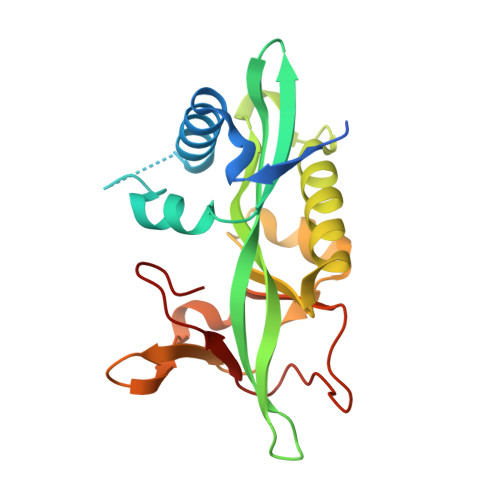Structural and biochemical analyses of an aminoglycoside 2'-N-acetyltransferase from Mycolicibacterium smegmatis.
Jeong, C.S., Hwang, J., Do, H., Cha, S.S., Oh, T.J., Kim, H.J., Park, H.H., Lee, J.H.(2020) Sci Rep 10: 21503-21503
- PubMed: 33299080
- DOI: https://doi.org/10.1038/s41598-020-78699-z
- Primary Citation of Related Structures:
7CRM, 7CS0, 7CS1, 7CSI, 7CSJ - PubMed Abstract:
The expression of aminoglycoside-modifying enzymes represents a survival strategy of antibiotic-resistant bacteria. Aminoglycoside 2'-N-acetyltransferase [AAC(2')] neutralizes aminoglycoside drugs by acetylation of their 2' amino groups in an acetyl coenzyme A (CoA)-dependent manner. To understand the structural features and molecular mechanism underlying AAC(2') activity, we overexpressed, purified, and crystallized AAC(2') from Mycolicibacterium smegmatis [AAC(2')-Id] and determined the crystal structures of its apo-form and ternary complexes with CoA and four different aminoglycosides (gentamicin, sisomicin, neomycin, and paromomycin). These AAC(2')-Id structures unraveled the binding modes of different aminoglycosides, explaining the broad substrate specificity of the enzyme. Comparative structural analysis showed that the α4-helix and β8-β9 loop region undergo major conformational changes upon CoA and substrate binding. Additionally, structural comparison between the present paromomycin-bound AAC(2')-Id structure and the previously reported paromomycin-bound AAC(6')-Ib and 30S ribosome structures revealed the structural features of paromomycin that are responsible for its antibiotic activity and AAC binding. Taken together, these results provide useful information for designing AAC(2') inhibitors and for the chemical modification of aminoglycosides.
Organizational Affiliation:
Research Unit of Cryogenic Novel Material, Korea Polar Research Institute, Incheon, 21990, Republic of Korea.



















